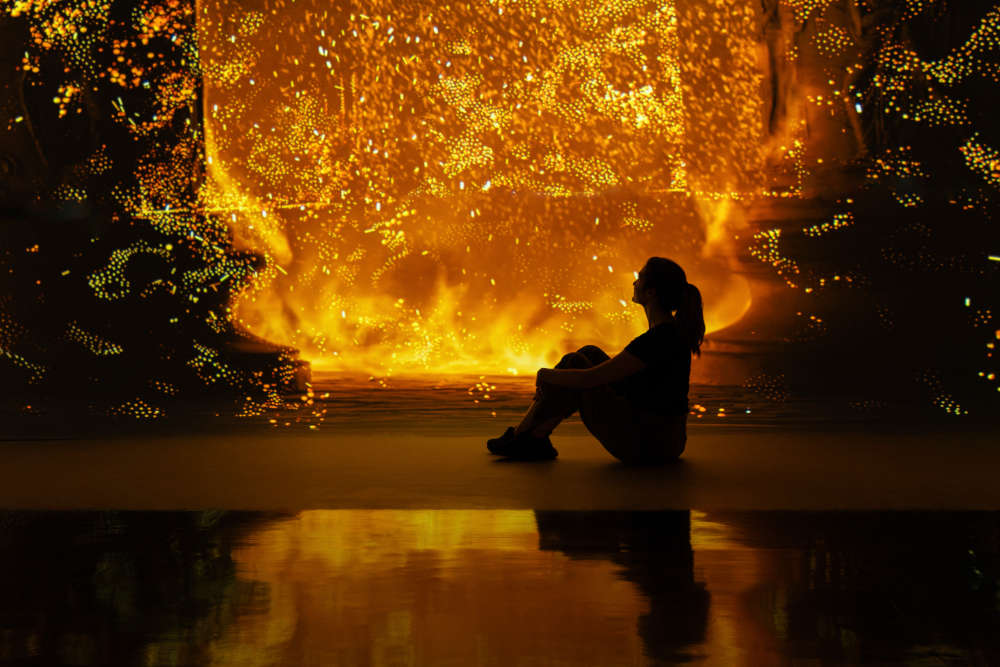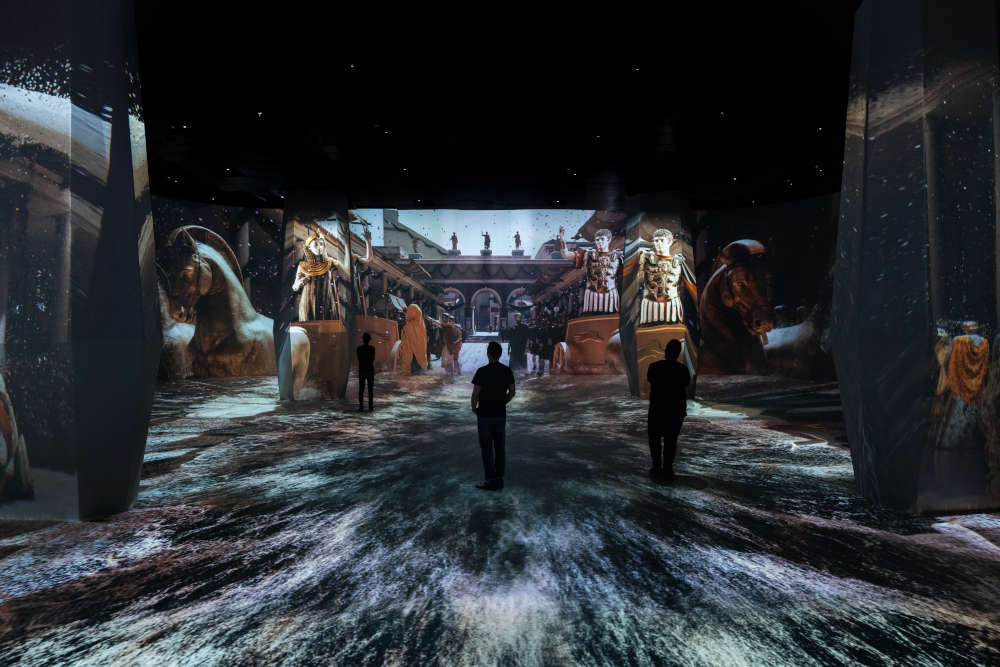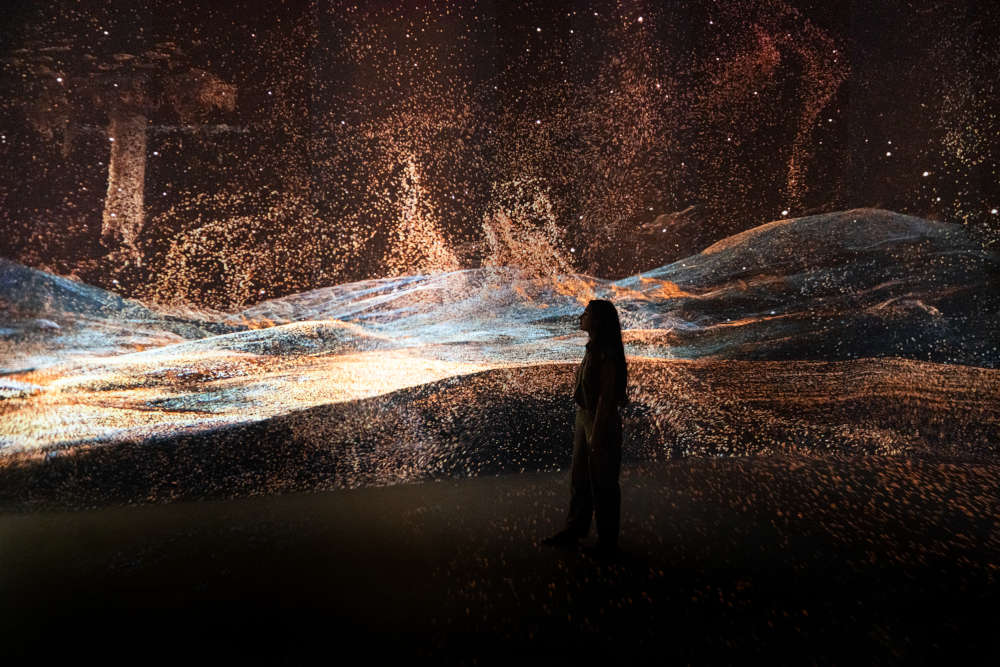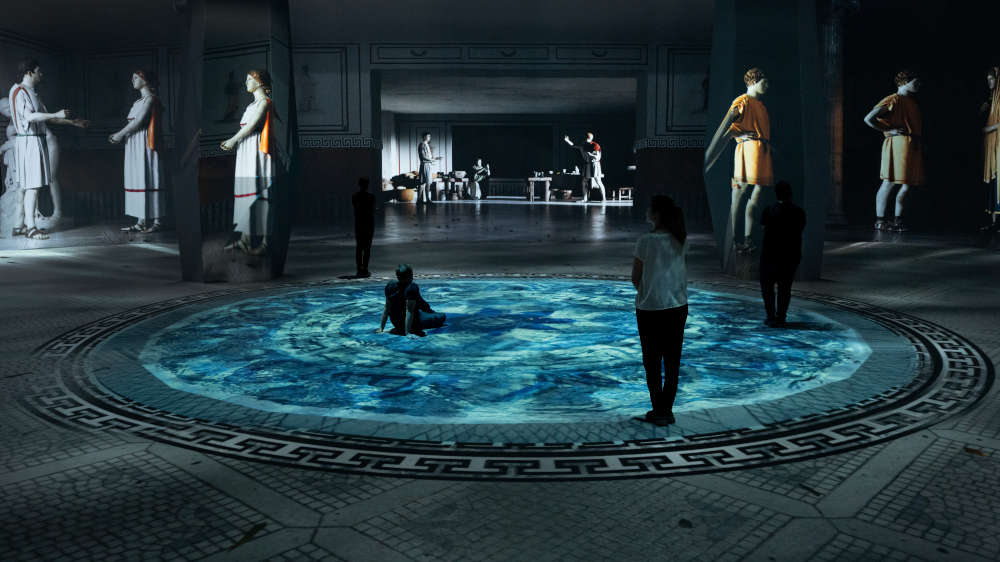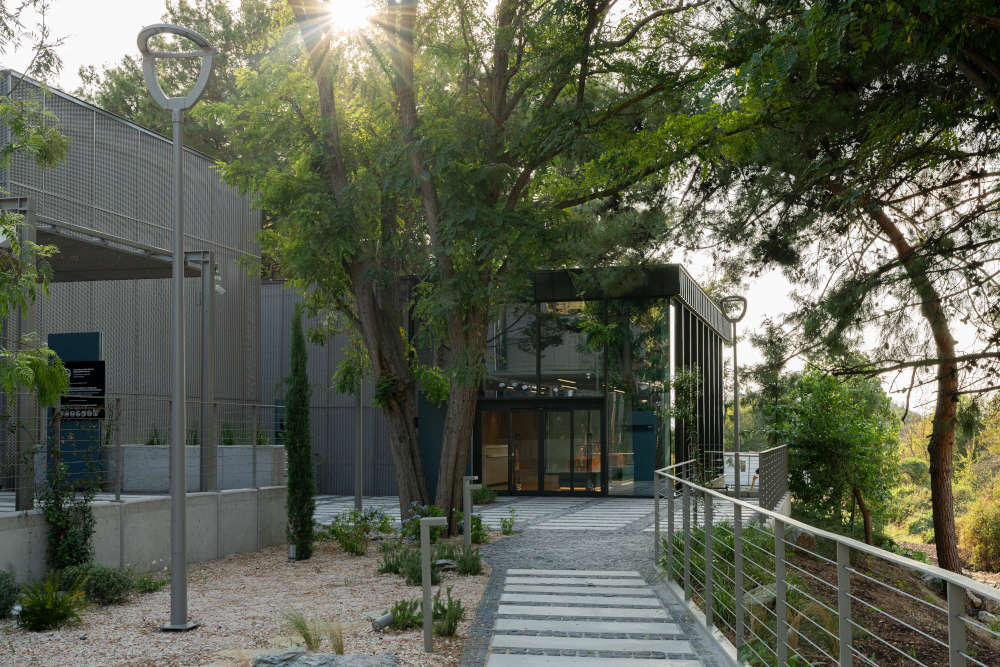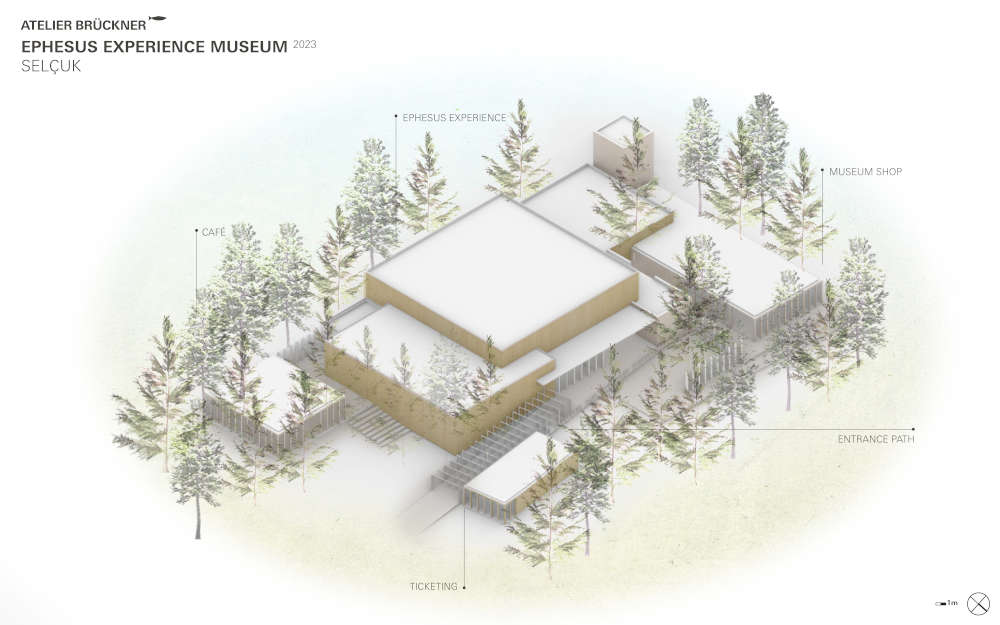Ephesus Experience Museum – Symphony on a World Heritage Site
Nestled within the sacred grounds of the archaeological site of Selçuk, Turkey, the Ephesus Experience Museum resurrects the rich past of the once-legendary city Ephesos. An audiovisual symphony of myth and reality takes visitors on a journey into the past. ATELIER BRÜCKNER designed the architecture and the immersive visitor experience. It covers 2400 square metres and is intended to welcome 2200 visitors a day. The experience appeals to all senses.
Visitors are immersed in ancient Ephesus and its history, told in three chapters. A three-dimensional soundscape, rich in musical composition, permeates the rooms. It evokes the melodies of antiquity, bustling markets and whispers of lives once lived. Like living particles, myths and tangible everyday life swirl around the visitors. The large-format 360-degree projections create a vivid spatial image that is enhanced by state-of-the-art audio technology and multisensory elements such as smell and fog to become an immersive experience. A storyteller guides the visitors through the rooms and experiences. The audio guide is available in over a dozen languages.
In the first room (approximately 5min 30sec), visitors learn about the prophecies of the Oracle of Delphi almost eight millennia ago, about Androclos, an Athenian prince who founded the new city in Asia Minor and about the city’s patron goddess, Artemis, and her role in the founding of the city. The room takes the visitor through its three temples: the First Temple, the Marble Temple and finally the Artemision, one of the Seven Wonders of the Ancient World.
As the chapters of the city unfold, visitors are transported to the second room (approximately 7min 30sec), which takes them on a historic visit to the city at its height. They descend from high above the sea to the bustling Arcadian Way and meet Cleopatra and Mark Anthony on the marble streets. They marvel at the splendor of the terraced houses and feel the echoes of epic contests in the ancient theatre as the city marches on under Roman rule. In the city’s poignant twilight, a new faith takes hold – St Paul preached here and the magnificent basilica of St John was built – before the metropolis surrenders to an age of silence.
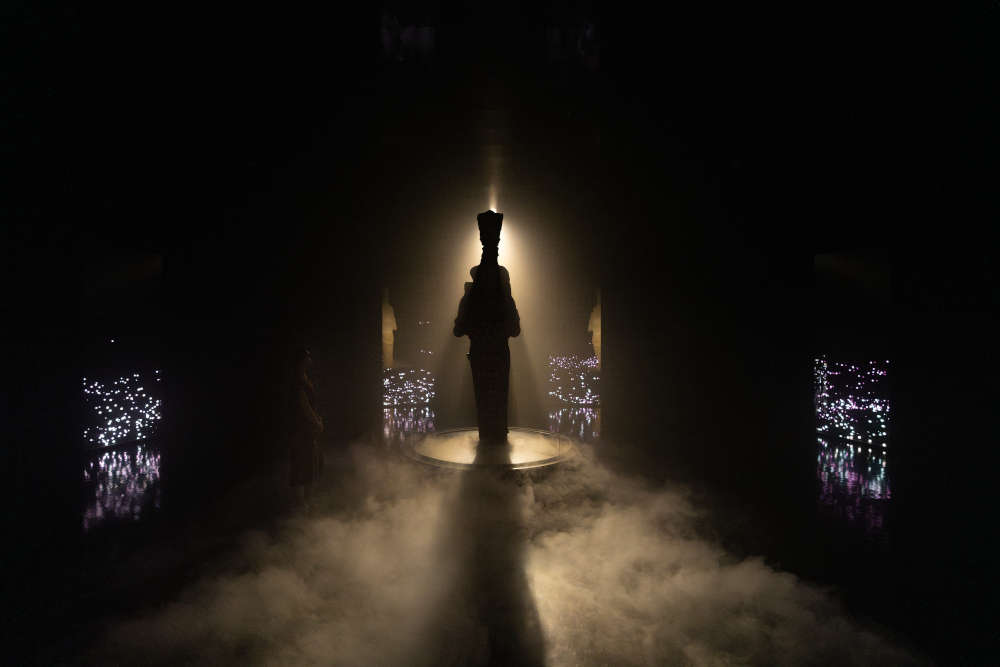
Third room – Artemis statue. Credit: Sandra Ciampone. Courtesy: Turkish Ministry of Culture / DEM Museums.
The third and final room (approximately 2min 30sec) is dedicated to the city’s patron goddess. It offers an immersive experience of light and sound, combined with a life-size statue of Artemis and monolithic screens to envelop visitors in a poetic manifestation. Standing in front of the awe-inspiring statue of Artemis (faithful copy), visitors discover how Artemis has always been present; a guardian of life itself, immortalized in the breath of the trees, the pulse of the mountains and the heartbeat of the city through the centuries. A majestic finale that will leave the visitors spellbound.
A visit to the Ephesus Experience Museum is a fulminant experience. It stands in deliberate contrast to the minimalist architecture of the museum, which is embedded in the trees of the archaeological landscape. The surface of the building reflects the surroundings. Its architectural volume gradually emerges between the pine trees. A gently sloping ramp provides a welcoming path, leading into a semi-enclosed courtyard before embarking on the expansive journey. The new structure was designed to be entirely reversible, emphasizing the commitment to preserving the site’s integrity for future generations.









